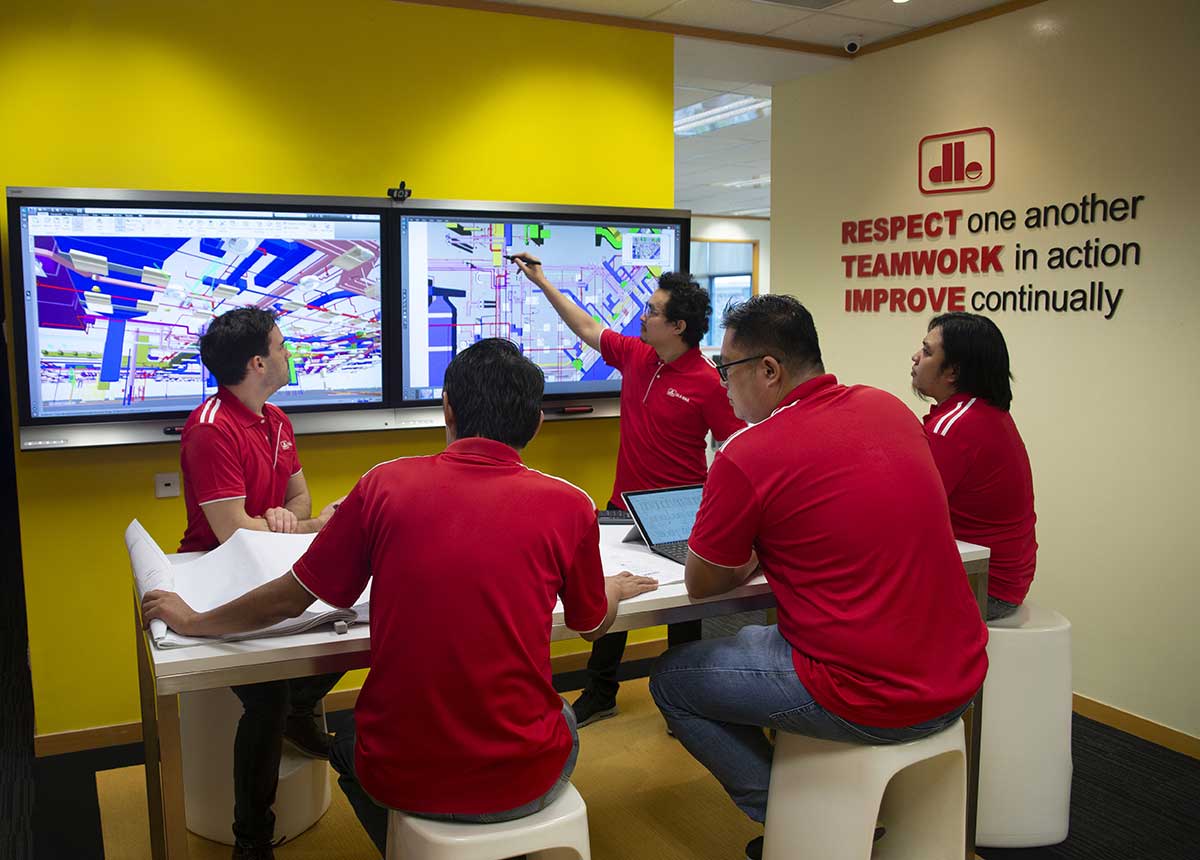We believe that being a technology-driven company will be a strong pull factor in talent attraction.
DLE M&E Pte Ltd is an award-winning firm with more than 35 years of experience in public- and private-sector projects. It has the highest L6 grading as a BCA registered firm in Air-Conditioning, Refrigeration & Ventilation Works, Electrical Engineering and Integrated Building Services Workheads.
A local graduate with a background in electrical engineering, Mr David Goh is an industry veteran who has been with DLE M&E for more than two decades. He plays a key role in driving the company’s knowledge enhancement and digitisation initiatives.
|
|
 DLE M&E has been stepping up its use of technology across its public- and private-sector projects for deeper multi-party collaboration and project efficiency DLE M&E has been stepping up its use of technology across its public- and private-sector projects for deeper multi-party collaboration and project efficiency
|
|
1. What technologies has the firm adopted for construction operations?
Building Information Modelling (BIM) is a key technology implemented in our large-scale projects and selectively for smaller-scale projects.
We also use Virtual Design and Construction (VDC), leveraging BIM to optimise our on-site production methods. This includes identifying opportunities to carry out prefabrication off site, minimising abortive works due to incomplete coordination and allowing for a more holistic view of the whole construction process so as to optimise the sequence of works amongst the various trades.
These technologies have allowed us to conduct more meaningful discussions using 3D models, especially with clients who are not familiar with Mechanical and Electrical (M&E) installations. Using connectivity to a central model and smart screens to aid visualisation, coordination of the various services are made very comprehensible and error free. There are also means to bring these digital models to field using tablets for better visualisation.
We want to achieve an ideal project scenario where we successfully apply our virtual designs to actual construction using the most optimised and effective technological methods.
2. What challenges does the firm face when it comes to technology adoption? How did you overcome them?
The challenging economic climate has resulted in many of our clients becoming more conservative and adverse towards adopting new technologies, as they usually do not come cheap.
Thankfully, the built environment (BE) sector has access to funding support and assistance from the government, who is taking the lead towards embracing digital change. In fact, many governmental projects currently have mandatory requirements for building technologies to be incorporated. This allows industry players to be accustomed to and proficient at these digital methods.
In addition, for every construction project, there are various parties involved. Everyone’s digital capabilities and competency level may differ; this can negatively impact the implementation of digital technologies for the project.
We believe this problem can be mitigated as more firms embrace building technologies. On our end, we make sure our employees are updated on the latest technologies, such as attending related seminars and courses organised by BCA. Such initiatives go towards supporting the overall professional upgrading of the BE workforce, so that firms like us have lower barrier to adopt these technologies.
3. Why is it important to digitalise the business?
There are three key reasons why we believe in going digital.
Firstly, labour costs are on the rise, and skilled professionals well-versed in construction and engineering technologies are increasingly hard to find. We believe that being a technology-driven company will be a strong pull factor in talent attraction.
Secondly, it makes simple business sense to digitalise our manual processes where possible, so that we can reduce paperwork and improve productivity.
Thirdly, the design and construction processes are more complicated today. As more components become specialised, more parties are involved in a project.
Without a shared platform to fully integrate various parties involved in building projects, we run the risk of poor coordination and abortive works.
In the case of BIM, everyone is working on the same model and the various components are fitted into the model geometrically. This greatly increases modelling accuracy and improves the outcome onsite.